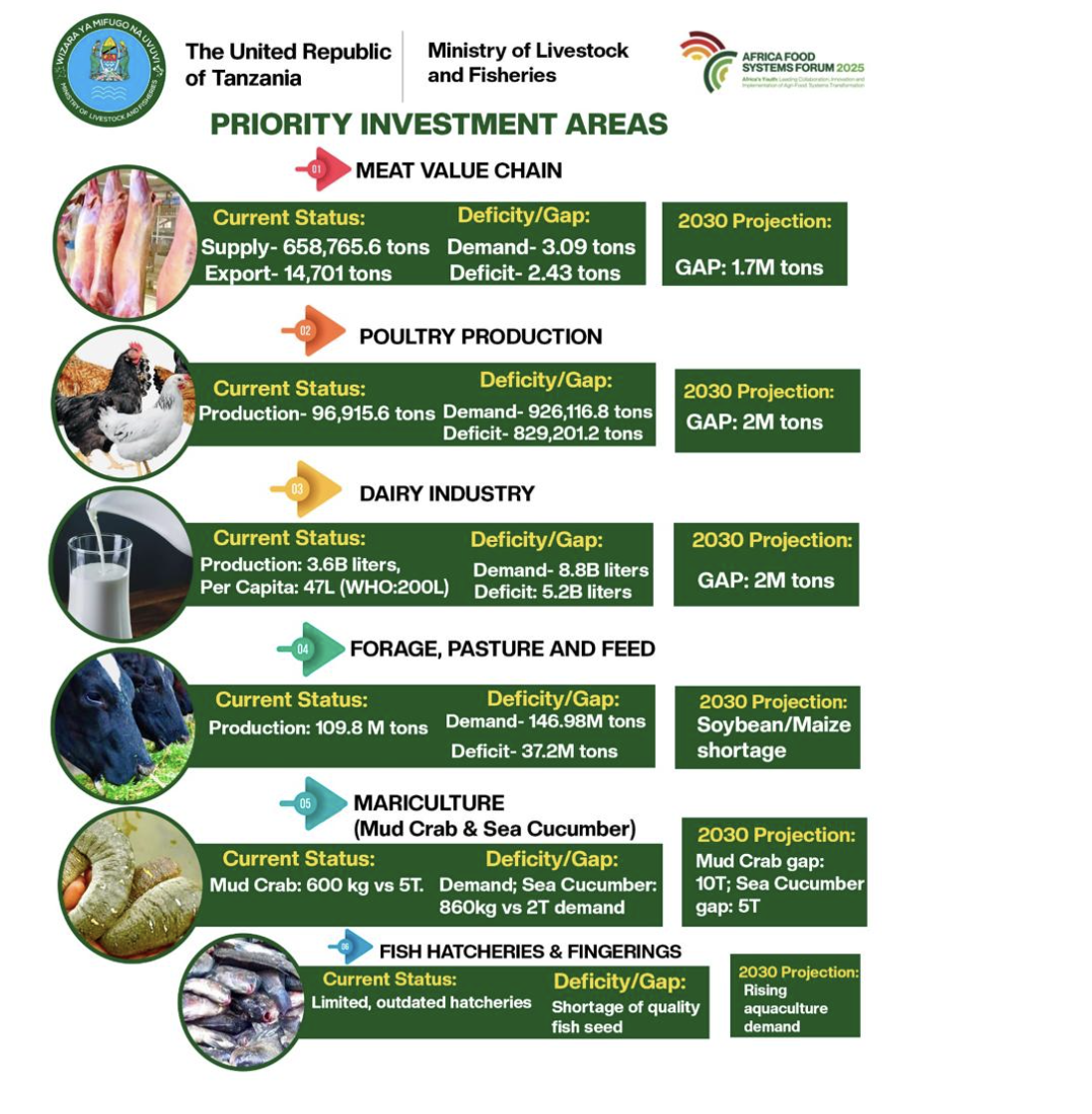
In the landscape of emerging market opportunities, few present as clear a signal for large-scale investment as Tanzania’s livestock and fisheries sectors. The East African nation, a bastion of political stability and consistent economic growth, is facing a structural deficit in its domestic protein supply chain. This gap, driven by a burgeoning population and rising consumer demand, represents a multi-billion dollar opportunity for strategic capital to build transformative, vertically integrated enterprises.
The Government of Tanzania, through its Ministry of Livestock and Fisheries, has proactively identified and quantified these shortfalls, effectively issuing a direct invitation to investors to partner in a foundational sector of its economy. The data paints a compelling picture not of scarcity, but of immense, untapped market potential.
## The Investment Thesis: Quantifying the Opportunity
The core of the investment thesis is a straightforward, supply-demand imbalance across multiple high-value verticals. The current market is unable to meet domestic needs, creating a significant runway for growth and import substitution, with further potential for establishing a regional export hub.
The Protein Value Chain: Meat and Poultry
The most significant opportunity lies in the meat and poultry sectors. Tanzania currently faces a combined annual deficit of over 3.2 million tons across these categories.
- Meat: With a current supply of 658,765.6 tons, the market has a shortfall of 2.43 million tons. Even with projected growth, a gap of 1.7 million tons is anticipated for 2030, ensuring long-term demand.
- Poultry: The poultry deficit is equally stark, with demand outstripping production by 829,201.2 tons annually. This gap is projected to widen to 2 million tons by 2030.
For investors, this signals a clear opportunity to deploy capital into large-scale, integrated operations, including commercial ranches, industrial feedlots, modern export-grade abattoirs, and value-added processing facilities.
The Dairy Market: A Consumer Revolution
The dairy industry represents a powerful consumer market play. Current annual production of 3.6 billion liters falls drastically short of the 8.8 billion liters demanded, creating a 5.2 billion liter deficit. Per capita consumption stands at just 47 liters, a fraction of the 200 liters recommended by the WHO, highlighting a deep, untapped potential for market expansion as incomes rise. The investment case here is not just in production, but in building powerful consumer brands through processing plants for pasteurized milk, cheese, and other derivatives.
Aquaculture & Mariculture: High-Margin Export Plays
Tanzania’s vast aquatic resources—spanning a 1,424 km coastline and territorial waters in three of Africa’s Great Lakes—are critically underdeveloped. This opens niche, high-margin opportunities:
- Cage Fish Farming: The government has already performed strategic assessments, identifying 99 suitable sites in Lake Victoria for fish cage farming, de-risking the entry point for investors.
- Premium Exports: The demand for mariculture products like Mud Crab and Sea Cucumber from Asian markets vastly outstrips Tanzania’s current supply. The current Mud Crab supply of 600 kg meets only a fraction of the 5-ton demand, a gap projected to hit 10 tons by 2030. This is a clear opportunity for ventures focused on high-value, direct-export farming and logistics.
## Strategic Pillars Supporting Investment
Beyond the numbers, Tanzania offers foundational strengths that mitigate risk and enhance the investment case.
- Resource Endowment: The nation possesses the second-largest livestock population in Africa, a crucial base of raw material that reduces import dependency for any large-scale processing operation. Its 88.6 million hectares of rangelands offer ample room for expansion.
- Strategic Market Access: An investment in Tanzania is a gateway to the 400-million-consumer markets of the East African Community (EAC) and the Southern African Development Community (SADC). This allows investors to establish a competitive production hub for the entire region.
- The Value-Addition Imperative: Currently, over 70% of livestock and fish products are sold raw and unprocessed. This is a significant leakage of economic value. The most astute investors will see the primary opportunity in capturing this value uplift through investment in modern processing, packaging, cold chain logistics, and branding.
- Government Partnership: The Tanzanian government has clearly signaled its intent to act as a partner and facilitator for investment in these sectors. This pro-business stance is a critical factor for securing large-scale capital.
The convergence of a massive structural supply deficit, a favorable operating environment, and strategic regional access presents a rare and compelling case. For global investors and financial institutions, Tanzania’s livestock and fisheries sectors are not merely an agricultural play, but a foundational investment in the future of Africa’s food security and consumer growth.
For further due diligence, the Ministry of Livestock and Fisheries can be contacted via its official portal: https://www.mifugouvuvi.go.tz.
